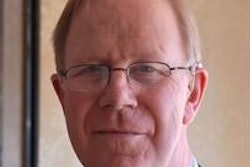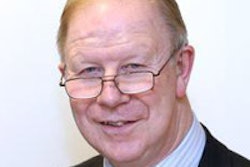
LIVERPOOL - There is a real danger that imaging has become a victim of its own success by being too effective, resulting in huge increases in workload, reduced clinical acumen, insufficient number of radiologists and radiographers, and too many sequences and images, warned Dr. Adrian Dixon on Tuesday at the U.K. Radiological Congress (UKRC).
Radiological findings are used increasingly as the basis for management decisions, to guide therapy, and assess the effectiveness of treatments, but this success brings with the risk of over-diagnosis, financial power, and turf battles, explained Dixon, emeritus professor of radiology at the University of Cambridge.

Many organizations view radiology as a potential way of making money, particularly from the worried well. Also, radiology is used increasingly as the basis for medicolegal judgements. Against this background, clinicians demand more and more imaging investigations, putting hard-working radiographic and radiological teams under yet more pressure, he told a packed room of UKRC attendees at the British Institute of Radiology (BIR) Toshiba Mayneord Lecture.
The lumbar spine plain radiograph, for instance, continues to be ordered by general practitioners (GPs) and clinicians, but it gives false reassurance in some cases, can delay a definitive diagnosis, involves high radiation dose, and should rarely be performed, he said. In comparison, MRI has important advantages in terms of direct sagittal anatomy and longitudinal ligament, and by providing useful details about disks and end plate, as well as other serial and dynamic information.
Coming out of the shadows
The introduction of CT, MRI, and ultrasound has revolutionized medicine, bringing radiology out of the darkened basement into the brightly illuminated front line of clinical practice, noted Dixon, who was editor-in-chief of European Radiology from 2007 to 2013, adding that today as many as 85% or 90% of cancers are detected by radiologists.
Objective accurate radiological evidence is so readily available that the clinical examination has become something of an art form, he continued.
"Personally, I hate the word 'scan,' " he said. "Your next-door neighbour tells you they're going for a scan tomorrow, and it's rather like saying 'I'm going to the zoo tomorrow!' But what type of scan? CT, MR, or something else?"
Dixon said he did not wish to get into debate over whether breast and lung cancer screening save lives, but he believes it's important to bear in mind that radiation dose at diagnostic levels is less of an issue these days. "To be able to get down to well below 1 mSv is simply breathtaking."
Traditionally, the critical five-point scale for the success of imaging has been technical performance, diagnostic performance, diagnostic impact, therapeutic impact, and impact on health. According to Dixon, a sixth point now can be added to this list: effect on society. The important question is whether cancer scans save lives, but this is a difficult question to answer precisely.
Overall, he stressed the importance of deciding on the right examination on the right machine for the patient and ensuring capacity exists. Teamwork is also essential.
"Medical imaging is about team spirit -- indivisible and fundamental," he concluded.
In his introduction, BIR President Dr. David Wilson paid tribute to Dixon's career.
"He's Cambridge to the core, having been born there. He's written so many papers that we don't count them in numbers, we weigh them," Wilson said. "He's made major changes in how we think about radiology, and he has introduced us to the most important concept of whether imaging is worthwhile and whether it works put in a clinical context."



















